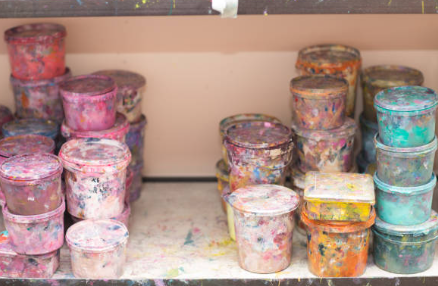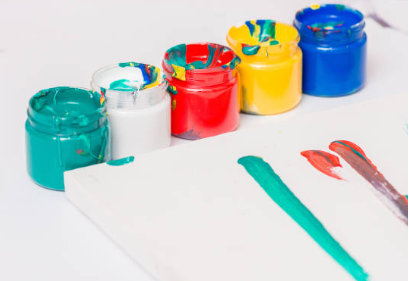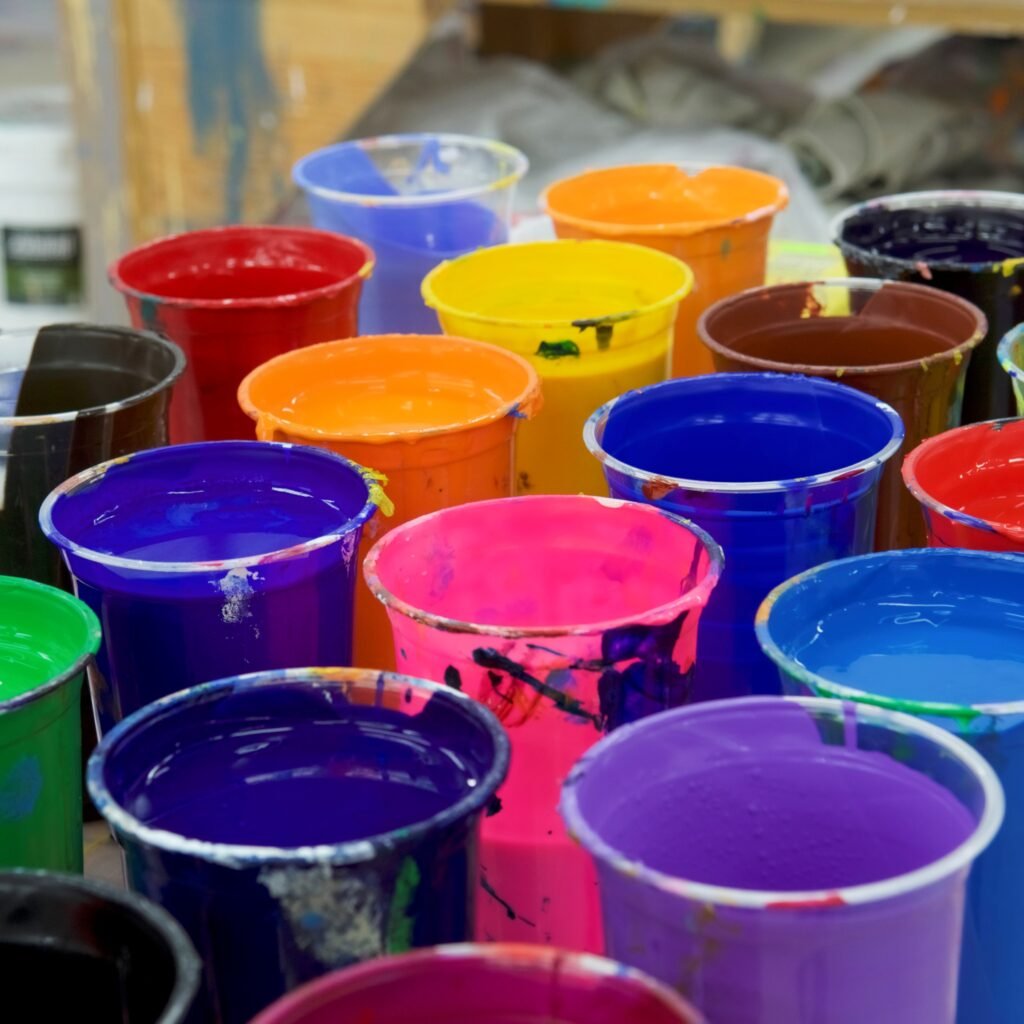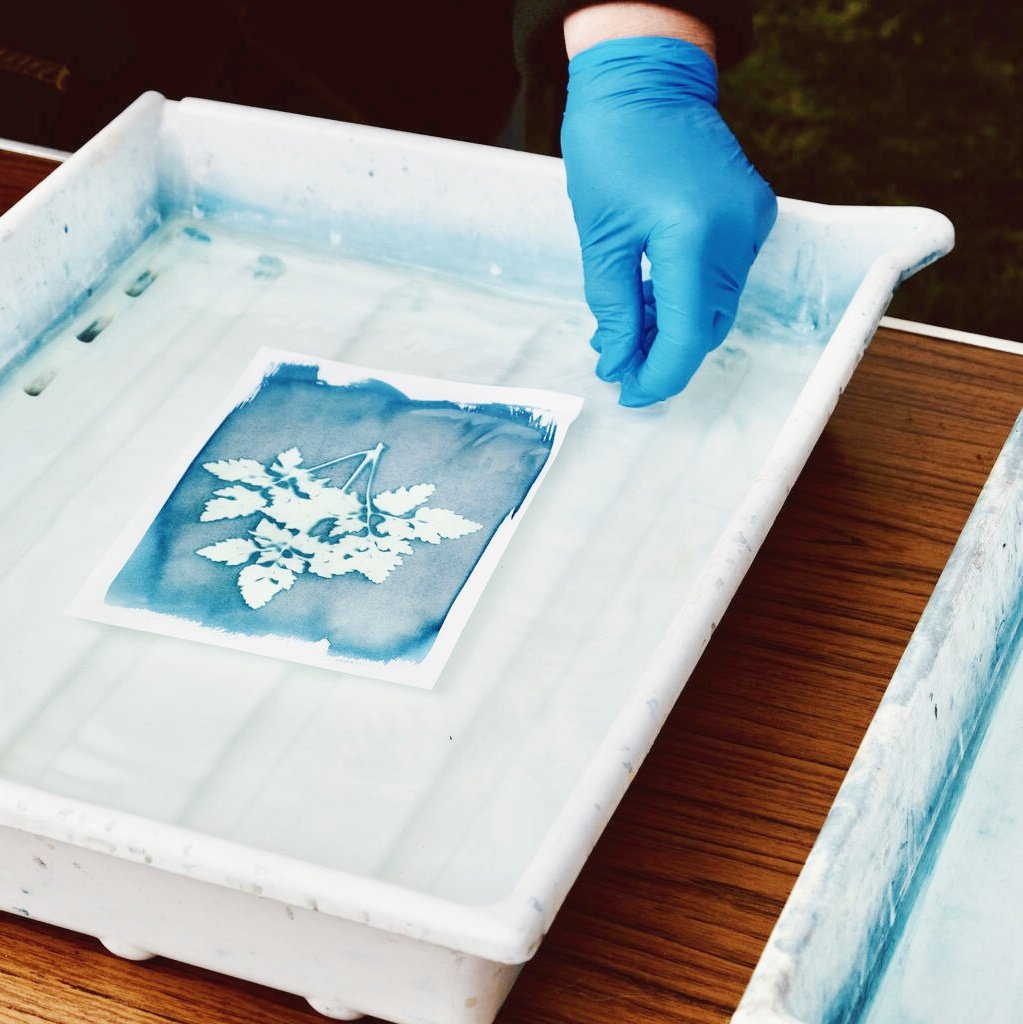Mục lục
Hướng dẫn toàn diện về cách sử dụng mực Plastisol trong nhiều ngành công nghiệp khác nhau
Mực Plastisol is a popular choice for printing on clothes, cars, signs, and more. But if you use it wrong, your designs might crack, fade, or wash off. This guide will show you how to use mực plastisol the right way. Let’s get started!
Mực Plastisol là gì?
Mực Plastisol is made from two main ingredients:
- Nhựa PVC (một loại nhựa).
- Chất dẻo (oily liquids that make the ink soft and workable).
Why do people love plastisol ink?
- Nó doesn’t dry until you heat it. This means it won’t clog your screens.
- It makes màu sắc tươi sáng that pop, even on dark fabrics.
- It stays strong and doesn’t fade sau khi rửa.

How Plastisol Ink is Used in Different Industries
1. Clothing and Apparel
Best fabrics: Cotton, polyester, and blends. Tips for success:
- Sử dụng soft-hand ink for comfortable t-shirts.
- Sử dụng mực mật độ cao for thick logos (like sports jerseys).
- Ví dụ: Big brands like Gildan use plastisol ink for millions of shirts.
2. Automotive and Manufacturing
Common uses: Dashboard labels, wire coatings, and machine tags. Key tips:
- The ink must handle high heat (over 300°F).
- Sử dụng adhesion promoters to make it stick to metal or plastic.
- Follow safety rules like UL Và ASTM tiêu chuẩn.
3. Signs and Packaging
Best materials: PVC banners, corrugated plastic, and Tyvek®. Make it last longer:
- Thêm vào UV-resistant chemicals to fight sun damage.
- Use thicker layers of ink for outdoor signs.
4. Sản phẩm khuyến mại
How to print: Sử dụng truyền nhiệt for mugs, phone cases, and keychains. Avoid cracks: Cure at lower temperatures on curved surfaces.
Step-by-Step Guide to Using Plastisol Ink
1. Prepare Your Tools
Choose the right screen:
- Số lượng lưới 110-160 for small details.
- 60-86 mesh count for thick ink layers. Clean your material: Wipe surfaces with rubbing alcohol first.
2. Printing Tips
Fix thin ink: Thêm vào curable reducer (like Wilflex additives). Stop ink bleeding: Keep the screen slightly raised off the fabric.
3. Làm khô mực
Perfect cure: Heat the ink to 320°F–330°F for 60–90 seconds. Check the temperature: Sử dụng một laser thermometer để có độ chính xác. Too hot? Ink becomes brittle. Too cold? Ink washes off.
Sửa chữa các vấn đề phổ biến
| Vấn đề | Sửa chữa nhanh |
|---|---|
| Lỗ kim | Clean the screen and tighten the mesh. |
| Mực không dính | Use an adhesion promoter. |
| Nứt | Let the ink cool slowly after curing. |
| Fading after wash | Test prints using AATCC standards. |

Eco-Friendly and Safe Options
Safer inks: Thử không chứa phthalate brands like Matsui Evolve® hoặc Ryonet EcoLine. Workplace safety: Theo OSHA guidelines and read safety data sheets (SDS). Reduce waste: Recycle cured ink scraps instead of throwing them away.
New Trends in Plastisol Ink
- Mực lai Mix plastisol with water-based ink for a softer feel.
- Mực dẫn điện Print circuits on car parts for smart surfaces.
- Eco-Plasticizers Use plant-based formulas made from soy or castor oil.
Những câu hỏi thường gặp
Can plastisol ink be used on nylon?
Có! Sử dụng adhesion promoters first to help it stick.
Suy nghĩ cuối cùng
Mực Plastisol is perfect for creating tough, vibrant prints on clothes, cars, signs, and more. Always cure at 320°F–330°F, choose the right screen mesh count, and try mực thân thiện với môi trường giống Ryonet EcoLine for safer projects.
Need help? Download a free plastisol curing cheat sheet here.



